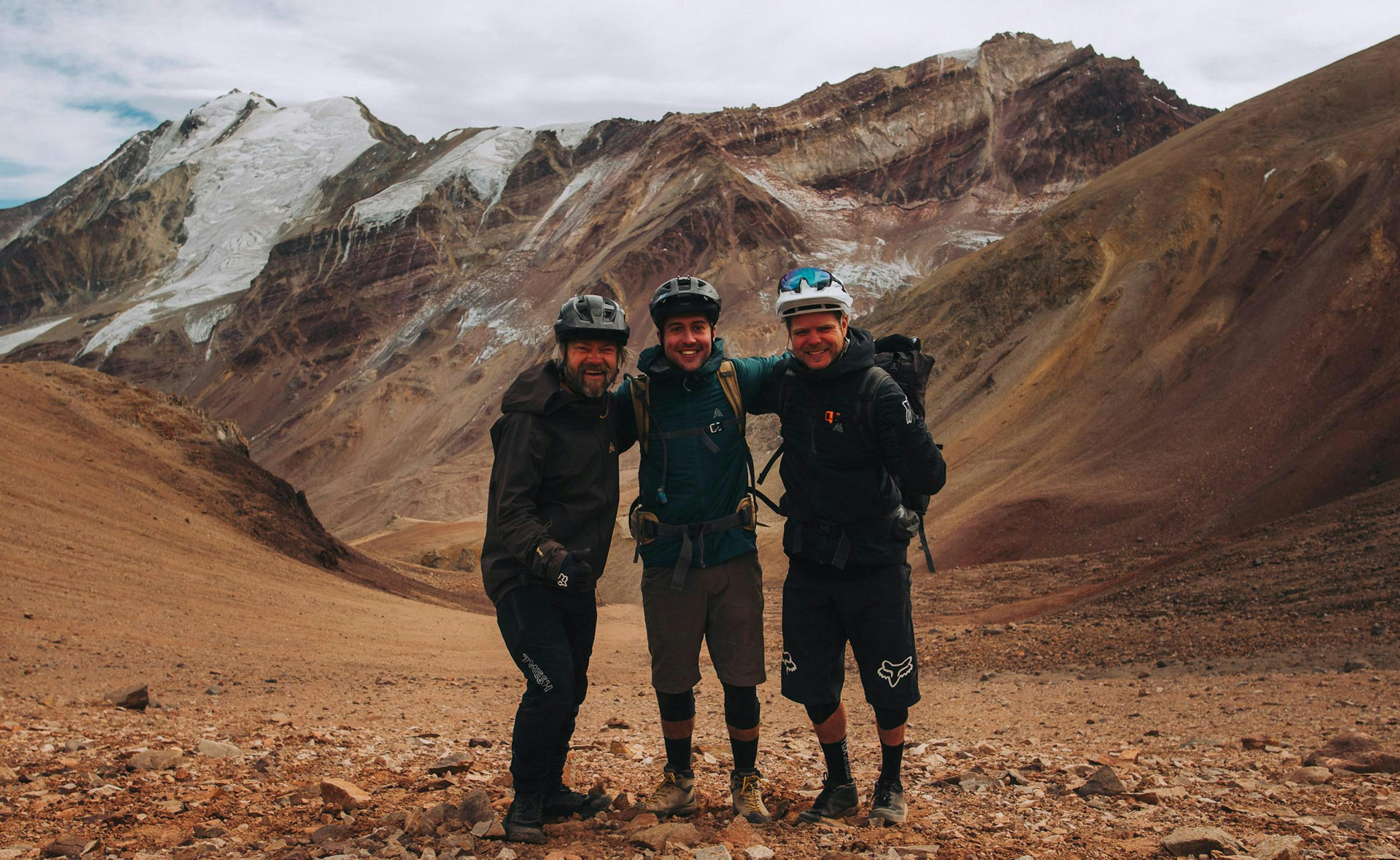Taking on Tupungato
Catch up with Margus Riga as he talks about summiting Mount Tupungato, one of the tallest mountains in the Americas.
Words by: Margus Riga
Photos by: Margus Riga
There's something about setting your sights on a "likely possible" riding adventure; a route that you're still unsure of, or a distance that seems a bit far-fetched. For Margus Riga though, those "likely possible" trips are what he specializes in, going to the farthest corners of BC and beyond to get his riding fix, all the while capturing it all on camera.
Known for his "hogging" adventures where Margus and his crew take on trips where hike-a-bike time is almost equal to riding time, it's no secret that the well-known photographer is keen to get after what most likely wouldn't.
Having set his sights on a new adventure in Chile, Margus and friend Kenny Smith aim to take on summiting Tupungato, one of the highest mountains in the Americans... by bike. We caught up with Margus after the trip to see how it all went down, and to ask him a couple of questions about what he's all about.
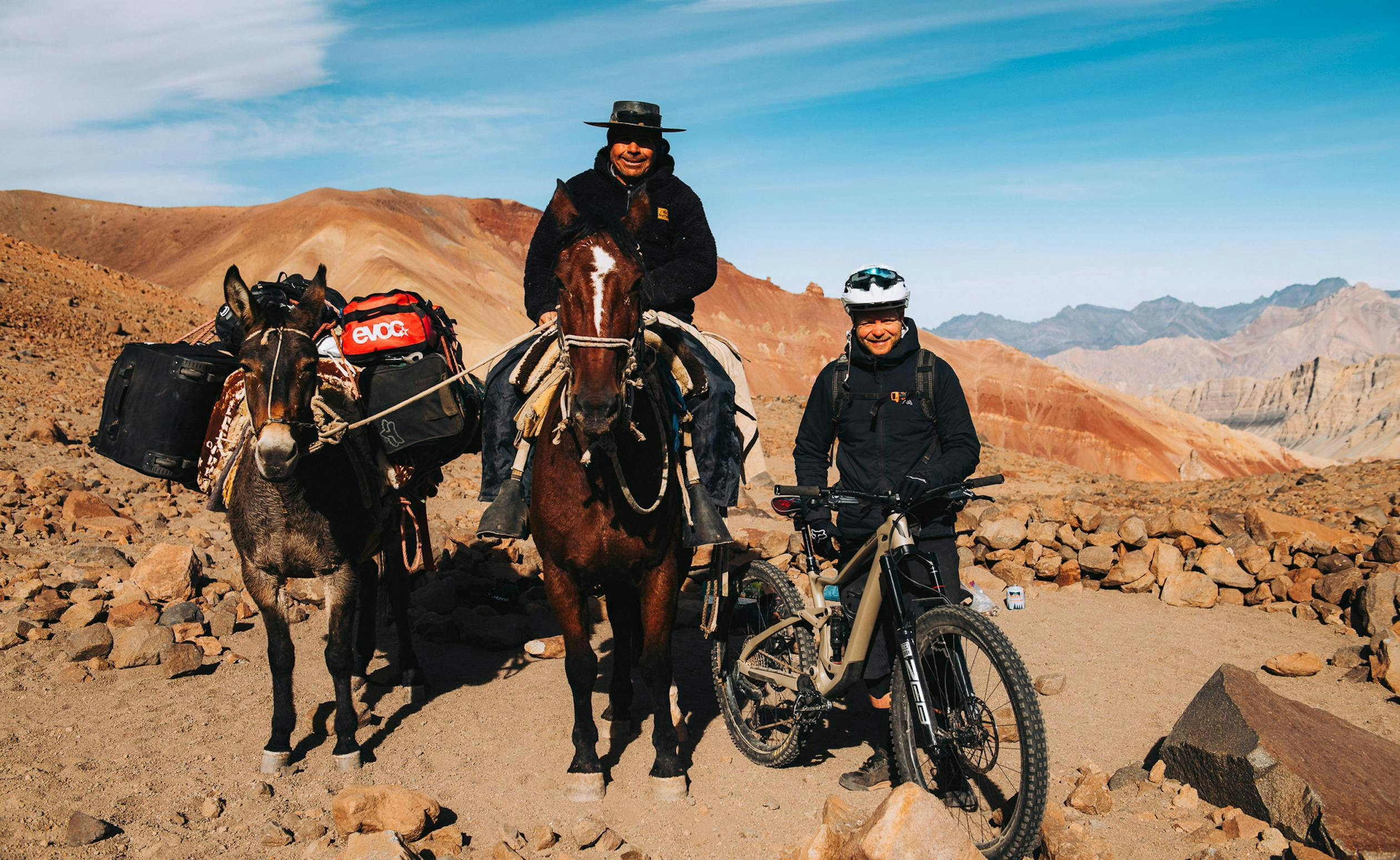
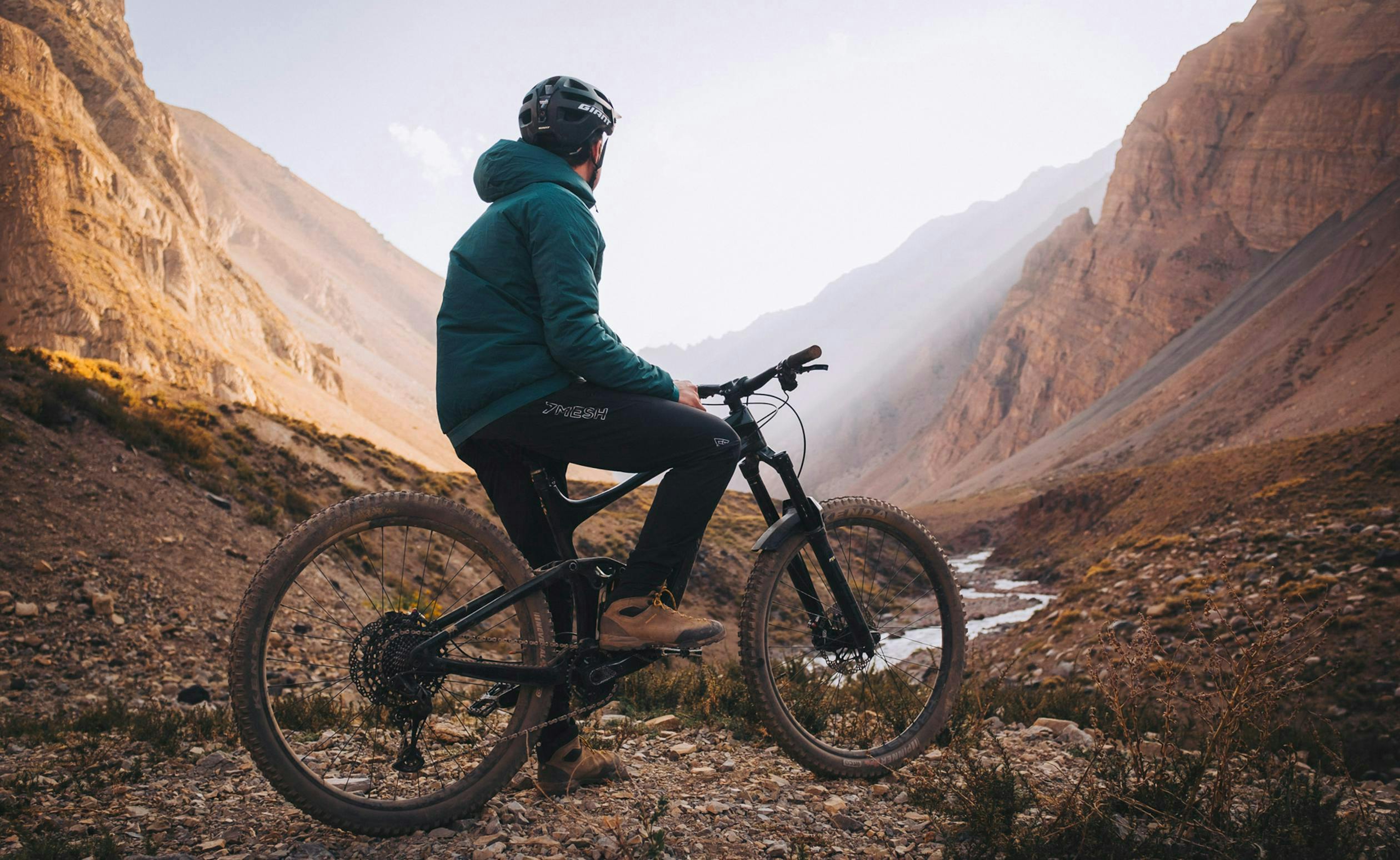
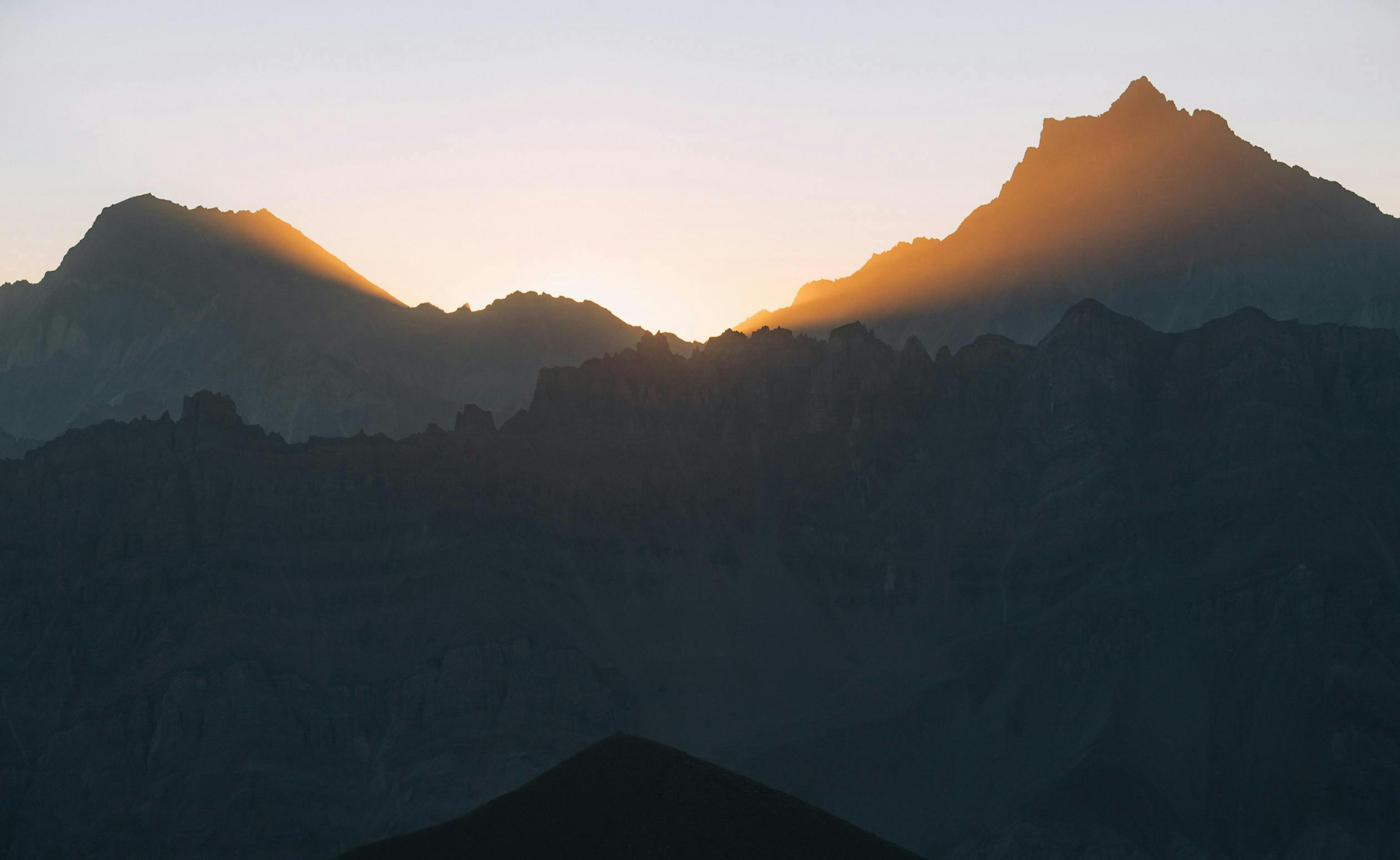
Hey Margus, how’s life in PNW winter been?
Life’s good. Just rolling with the weather patterns here.
To start off with, you’re obviously well known in your field as a photographer, but how long have you been shooting?
I first picked up the camera in high school, but didn’t start shooting professionally until my thirties. It took a long time to figure out what I really wanted to do. I’m now in my fifties.
So cool. And each year you do a crazy trip with a group of like-minded people…could you tell us more about Hogging?
Haha, yea hogging. That’s what my friend Kenny started calling it a few years ago. For us, it’s all about going on an adventure to places where most wouldn’t. We took an 8-day trip through the Purcells back in 2016 that really opened our eyes to what was possible on modern trail bikes, and every year we've been pushing it farther and farther.
Sweet, and your latest trip down to Chile, it looked crazy... can you give me a rundown where you went? How long were you there for?
This trip we went to climb and ride off the summit of Cerro Tupungato, a dormant volcano in Chile that is, I believe, the second highest peak in South America. Our goal for this trip was to cross the 20,000ft mark. We gave ourselves two weeks to make it happen.
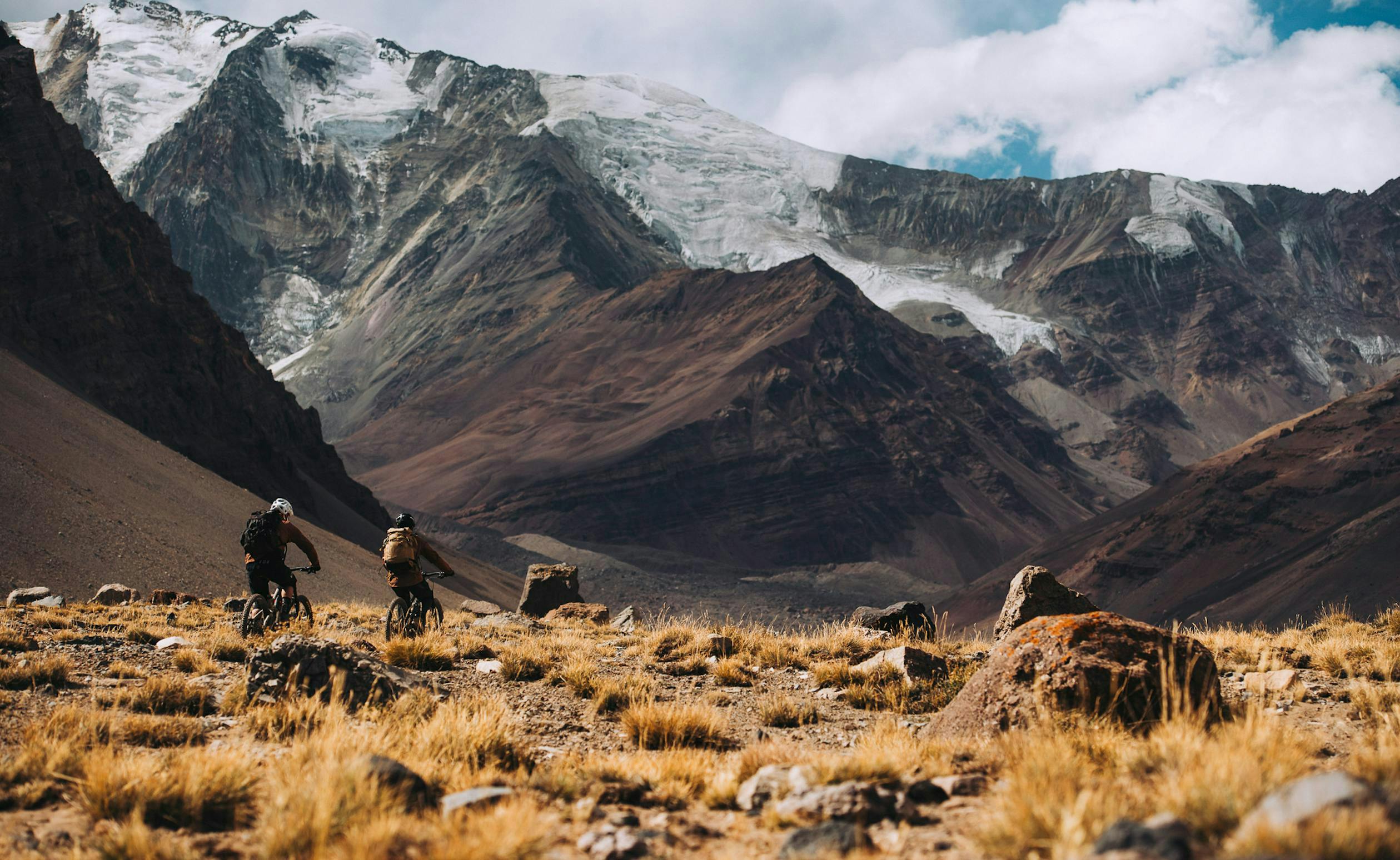
Seems far out! So what did prep look like for it then? Lots of riding beforehand? Pretty easy pulling all the gear you needed together?
Most of the prep was setting up the logistics, which were complex. First we needed to secure permits to climb Tupungato from the government. Then we needed to find someone with previous experience in that zone that could give us some beta on camp locations, weather, etc. Next we needed to find someone who could transport our gear to our basecamp, and also get us into the valley where we would depart from. That particular valley is owned and controlled by a mining company that, from what we heard, doesn’t care if you have a permit or not, and may or may not let you pass. Next came the gear list. Apart from our usual food rations and clothing, we also needed to account for extreme high alpine temperatures and weather, and how to deal with life at altitude. All things which we had not experienced before on any of our adventures. For training, it was business as usual; just riding as much as possible and staying healthy.
Seems complex to say the least.. must have been amazing seeing it all come together. What about the travel, what did that look like? You took off from BC and landed where? What was it like getting to the base of the mountain?
We flew from BC to Santiago Chile. From there we secured a ride to a small mountain town called El Alfalfal, where we met our Arriero (cowboy), who owns a plot of land in the Colorado valley, and who would get us through the mining checkpoint, and also porter our gear to our basecamp location at the base of Tupungato. It took us three days of traveling to get to the basecamp, with two camps along the way. Each day we slowly gained in altitude from our start point at 1300m to our basecamp at 4500m. Distance from start to basecamp was about 30km. We could have done it faster, but we took our time to let our bodies get accustomed to the altitude. From our basecamp location, the plan was to further acclimatize each day, by hiking our bikes up about 500m and spending time at that altitude. We then left our bikes, and hiked back down to basecamp. The next day we would bring one tent, and gear required to summit up to that altitude and camp. The plan was to set up three more camps, gradually gaining altitude and acclimatizing to prepare us for the final summit push day.
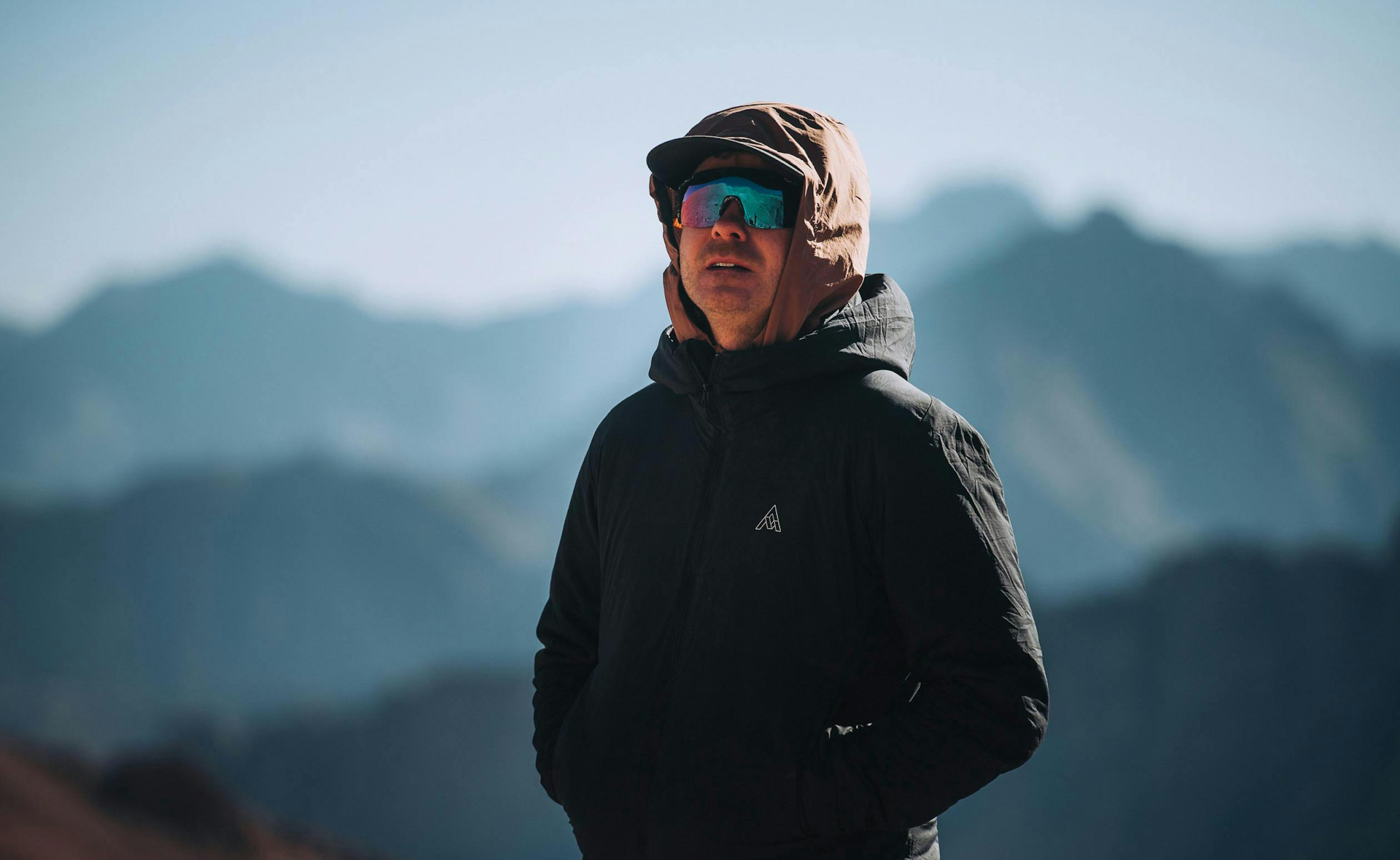
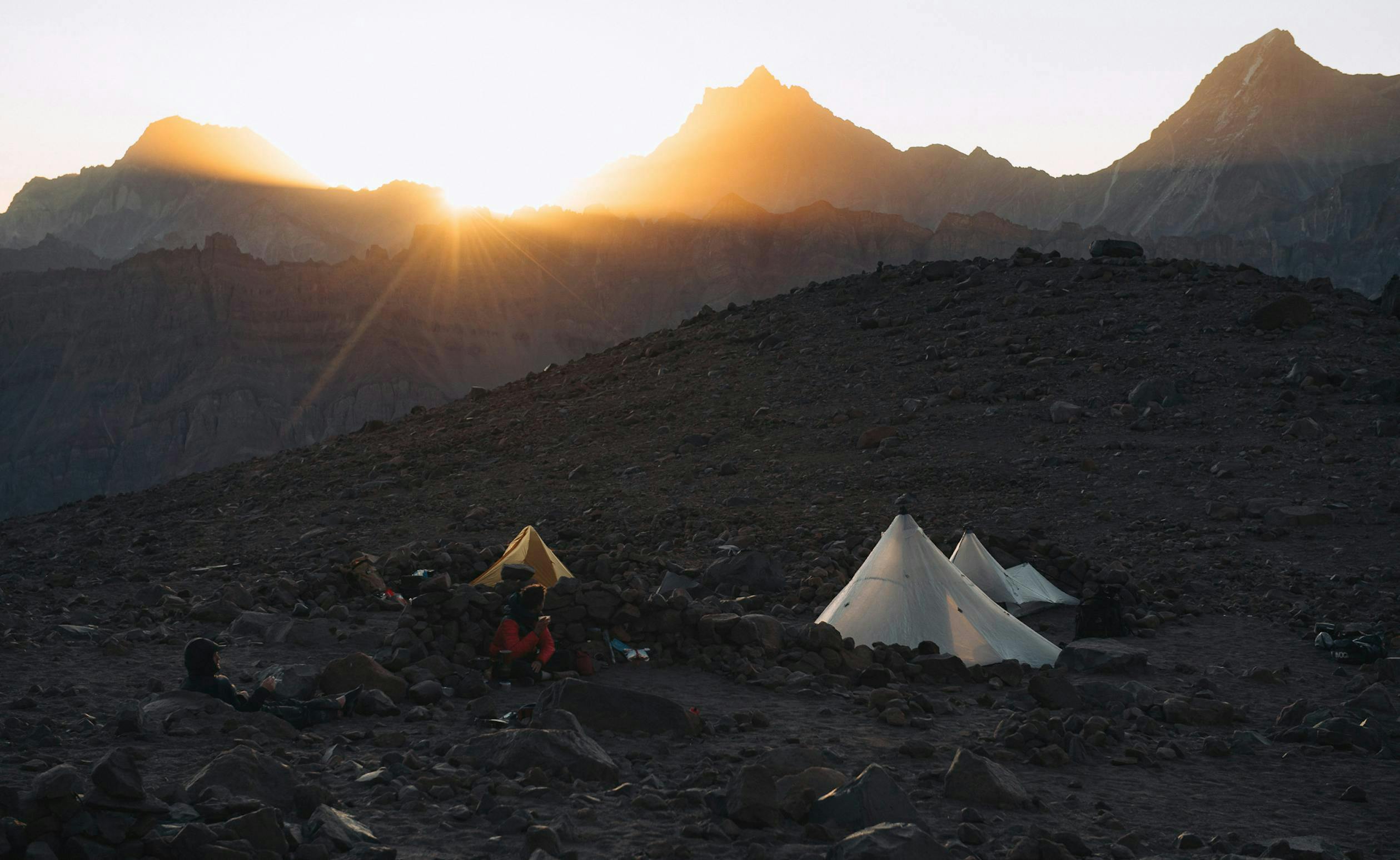
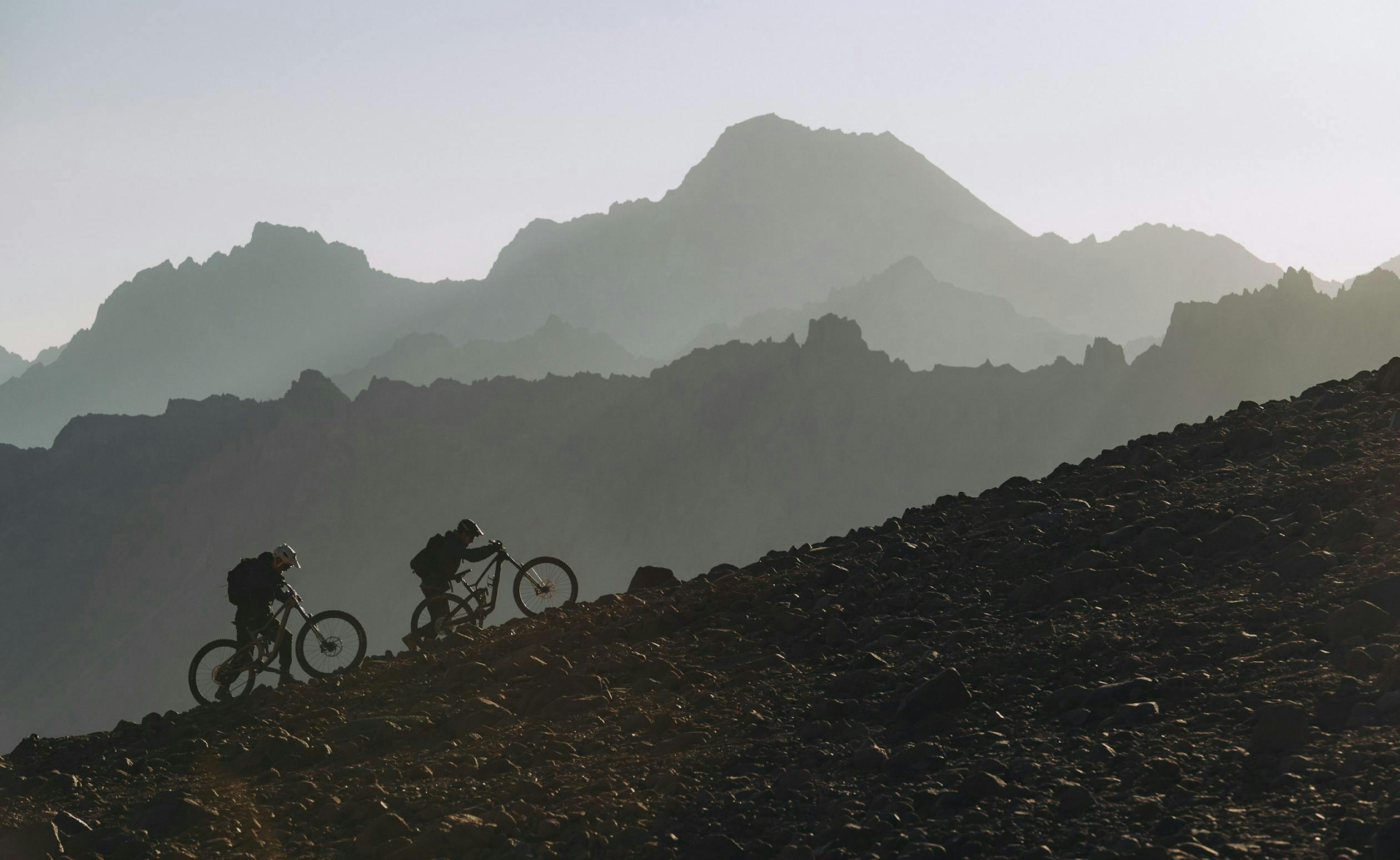
Wild, so then you pushed to the summit, how’d that all go? What did the push to the top look like?
Summit day. That will go down as the most physically and mentally grueling day of my life. We got the weather report from our Spot device that this day was the only weather window where we would be able to summit. The winds were low, and the clouds were minimal. The previous day, we had hiked our bikes up to 5,600m, and left them there. Originally, we were going to camp at this altitude, but the extreme winds (enough to knock you off your feet with a bike on your back) and temps (-30 degrees) prevented us from setting up camp. With three of us cramped in a two-man tent (we had left most of our supplies and personal tents at our basecamp situated at 4500m), sleeping was next to impossible. The decision was made to start our summit push at 10:30pm. It was a cold but windless night, and the initial hike to meet our bikes only took 1.5hrs. From here, that’s where things started to fall apart. The cold and altitude was beginning to get to us. I could no longer feel my toes, and had put on an extra pair of socks on the outside of my hiking boots/Chilean big mountain riding shoes. Diego, our Chilean guide, was puking his breakfast of gummy worms, and we were lost. We knew we needed to make it to this icefall section that preceded the only way to the summit via a steep, exposed couloir, but the icefall was knowhere in sight of our headlamps. It was now 2:30am, with another three hours of darkness before the first hint of any light would appear. Huddled close, freezing, next to a boulder, thoughts of doubt and failure began to surface. Had we jumped the gun in leaving too early? How far off course were we? Were we about to walk off a cliff? The team morale was going down fast. We had a brief discussion on bailing back down to basecamp and admitting failure. Yet for some reason, when we got back up, none of us said anything to each other, and we started back up the mountain. Another hour or so of basically walking in circles, we miraculously made it to the base of the icefall. It was too dangerous to try and make it up the icefall in darkness, so we had another two hours of waiting for the light. We alternated between hunkering down and snuggling against each other, and periodically walking up and down the slope to stay warm. Finally, the first rays of sun poked out over the horizon. It was like a gift from God. Immediately, our spirits lifted, and we were re-invigorated with a new sense of success. We put on our crampons, and began the slog up the icefall. The icefall looked like upside down pointy stalactites, and it was steep. One step up, lift your bike up two feet, and repeat. By the end of the icefall, the sun was out, and for the first time this day, the feeling that we would actually summit this volcano began to set in. Next came the couloir section, a steep pitch of sand and loose broken rock. This was the physically hardest section. We were nearing 6,000m and the lack of oxygen was palpable. It took all we had to take just ten steps, then drop the bike, and regain your breath. By the time we topped out above the couloir, we were done. I had nothing left. We lay there, like three corpses, on a precipice above the couloir for what seemed like hours. Kenny was hallucinating that everything had green moss on it. Diego (our Chilean friend and guide), was eating anything he could get his hands on, and I was just lying there, empty of thoughts and energy. We had another kilometer to go, and only five-hundred or so feet of elevation to gain before the summit. We labored with our gear, and managed once again to put the bikes on our backs, and just keep on pushing. Noone said anything for this last pitch. There was even a defined trail that lead to the summit from this point, though that didn’t make it any easier. After another hour-and-a-half of walking in what seemed like a trance, we summited Tupungato. Unceremoniously, we lit a cigarette, and smoked it. We took a few photos and looked down on the world, and then it was time to leave. It was now 4:30pm, and the sun was getting low. We got on our bikes, and rode the single most epic downhill of our lives. We returned to our basecamp at 10:30pm. Twenty-four-hours after we began.

So cool, well congrats again. Any big takeaways from that then? Or moments that stand our more than others?
Yea, biggest thing I learned from that summit push, is your body can keep going a lot further than your mind can.
I can only imagine. And any lowlights?
Hardest part about this trip was realizing nature is metal, and no amount of planning will or can prepare you for the tricks it may have up its sleeve.
Sounds like you had some pretty interest moments.. nature really is something. So for someone looking to head to Chile to ride, any pieces of advice for them?
The mountains in Chile are much bigger than the mountains here in British Columbia, like three times bigger. Study up on acclimatization.
Noted. And if you were to do this trip again, anything you’d change?
I’d bring burlier hiking boots. Both for the cold and ruggedness of the terrain. I had brand new boots, and they were throwaways after this trip.
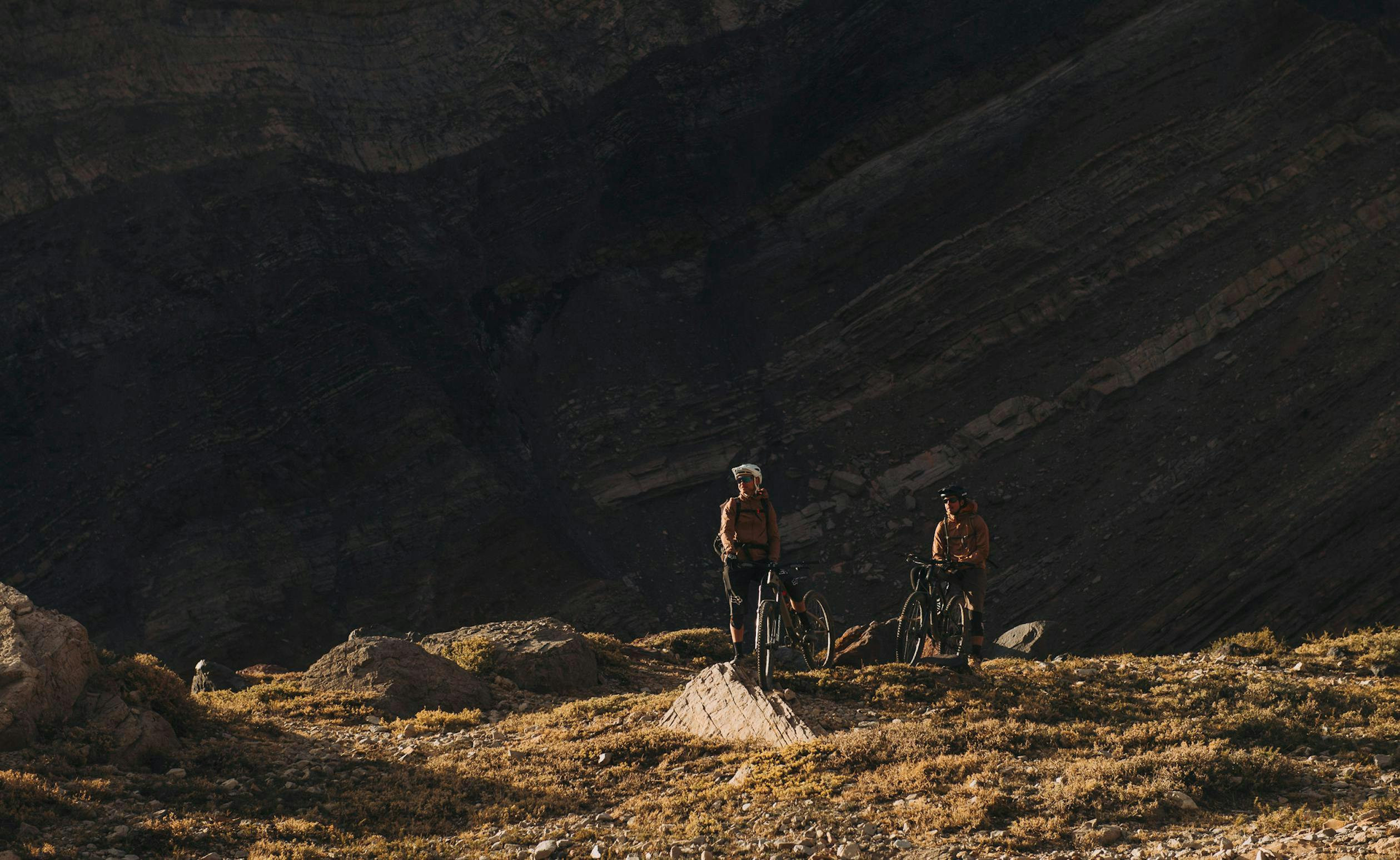
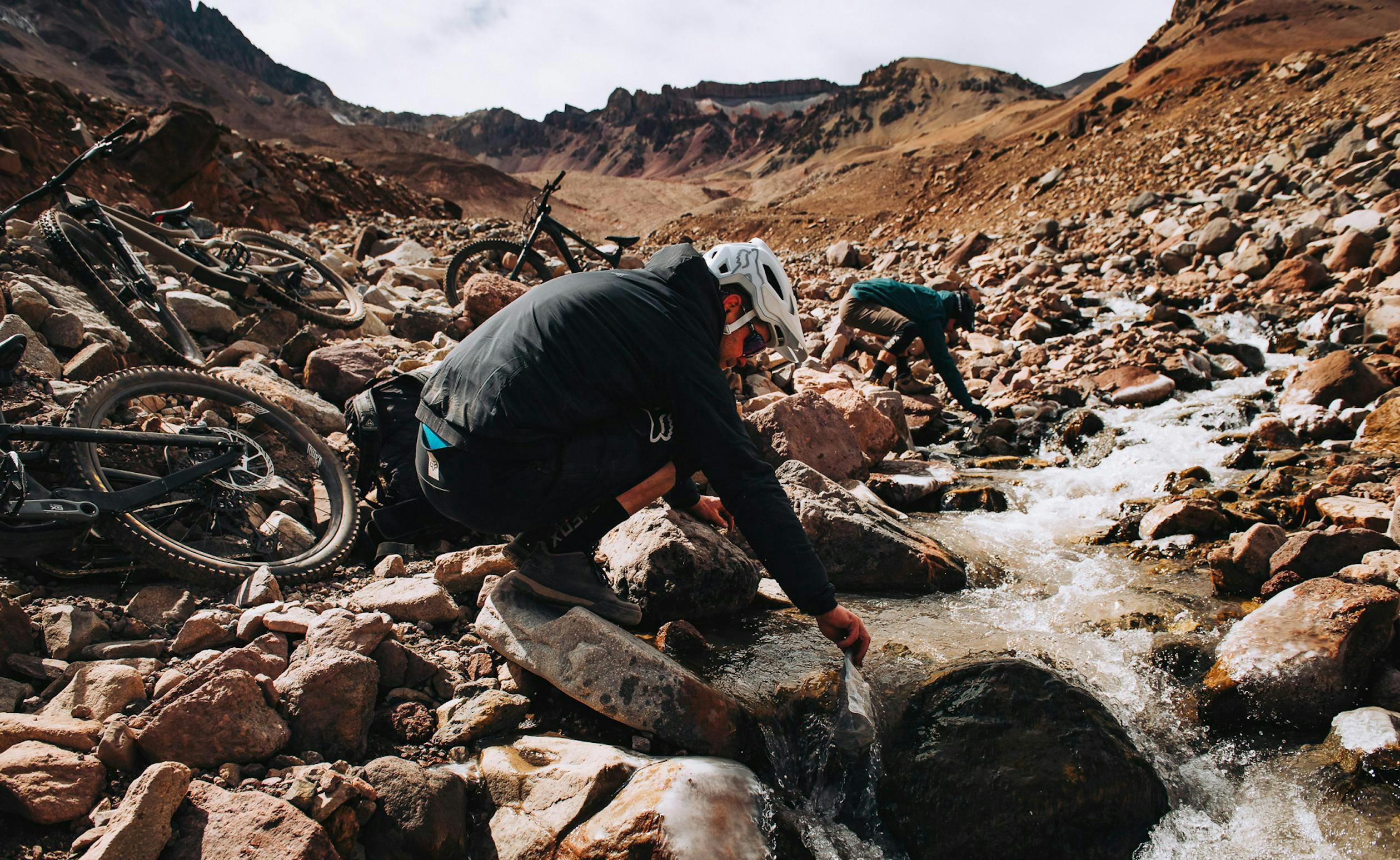
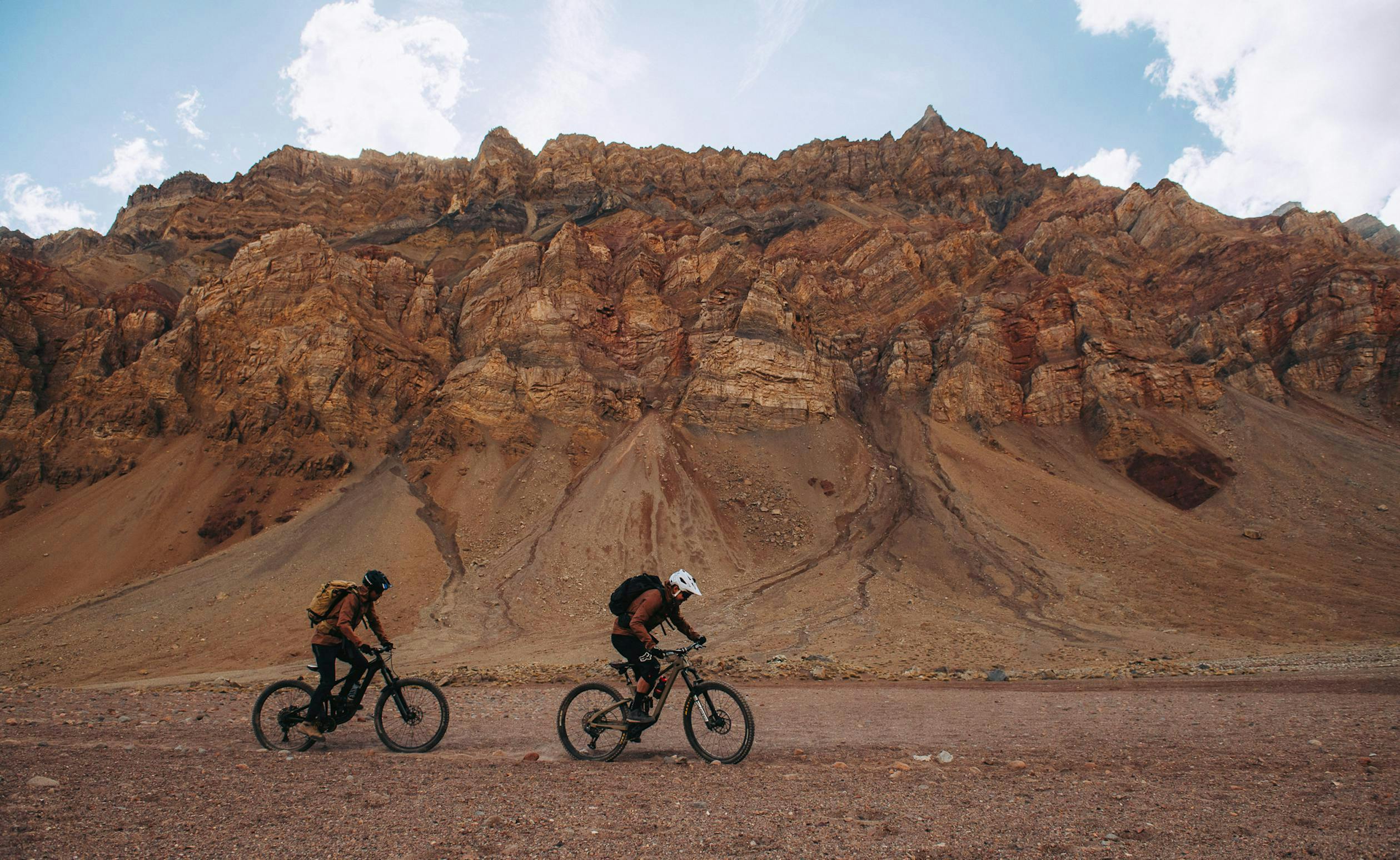

Got it. And Kenny, he seems like a wild man as well. What was it like sharing this with him?
Kenny and I have been doing these trips for what seems like forever. We share many of the same attributes and attitudes, which seem to help with us getting along on these trips and why we haven’t failed miserably on any of them - not yet at least haha.
Awesome. Did you meet any other locals while you were there?
Chile is one of my favorite places in the world, and the people are a large part of that. They’re more chill than most, and also more rugged. Our guide Diego, or rather friend that we met on this trip fits those words to a T. I met online through a mutual friend in Santiago, who introduced us. We were looking for someone who could give us some beta on the area, and not necessarily act as a guide, because having a guide to hold our hand and tell us what to do every step of the way is not really how we operate. Diego played an integral role in setting us up with the Arriero (cowboy), who transported our gear to basecamp and snuck us into the Colorado valley. Diego also introduced us to high altitude acclimatization, which was critical to us being able to summit and not die in the process.
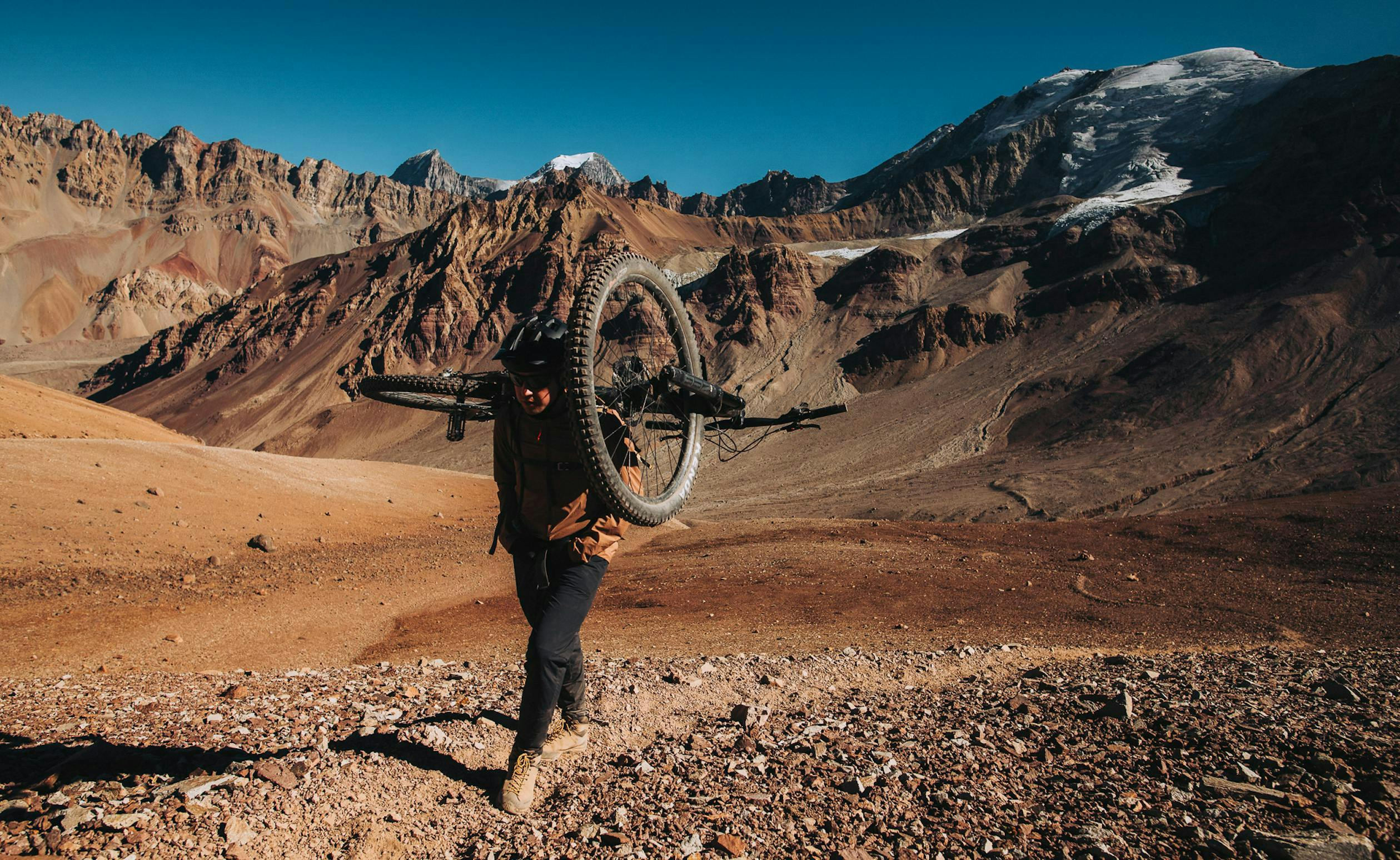
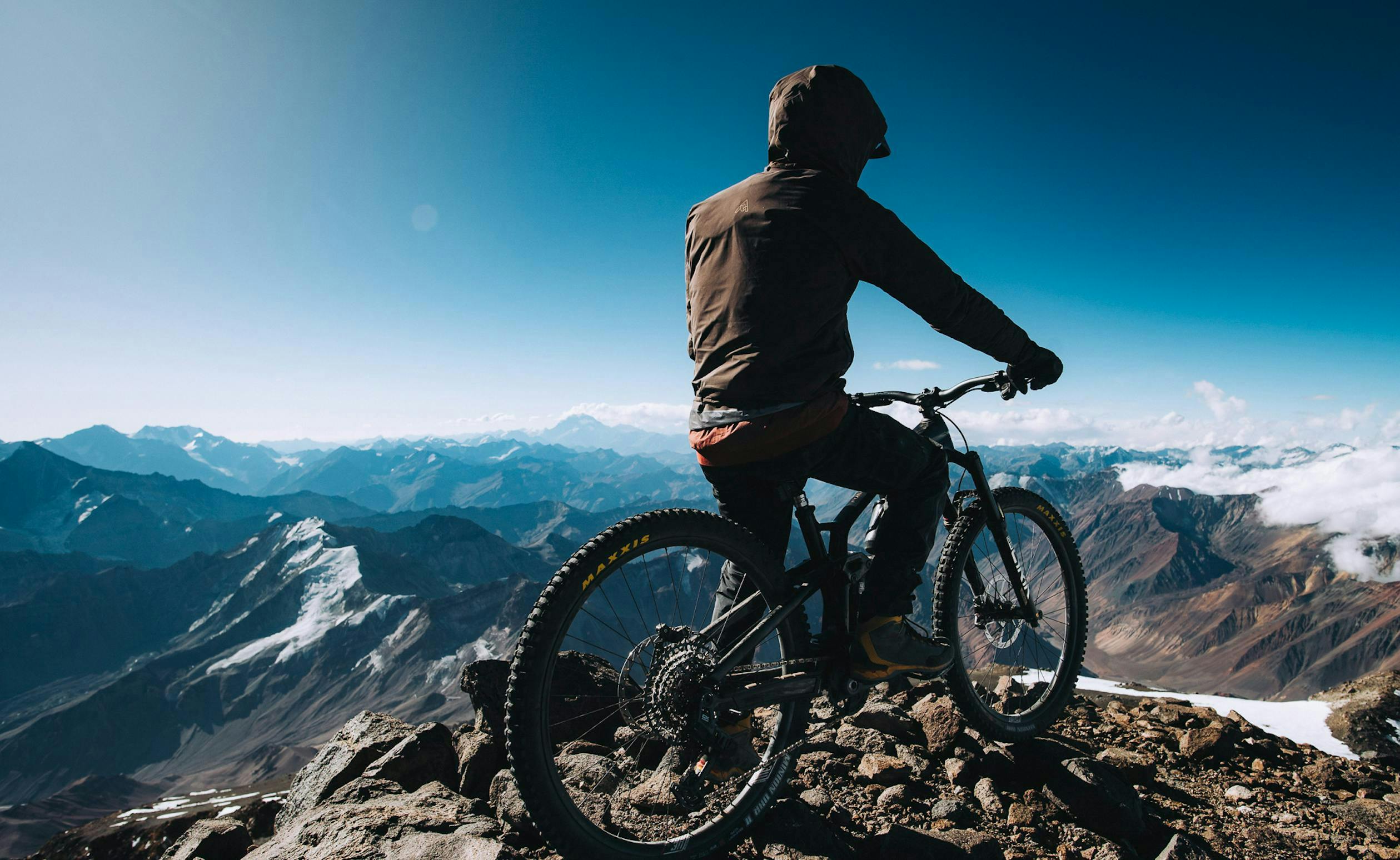

On the photos side, you’ve captured some amazing stuff. What was it like trying to shoot up there. I can imagine the cold made it tough?
Shooting up in the high mountains is a different beast altogether from my usual low altitude (relative) shooting at home. The cold and wind was the biggest hardship. It’s hard to press the shutter when you can’t feel your fingers, or when you fear opening your pack will result in everything in it being swept away into the air. Also, my drone was rendered useless because of the winds.
Cool, and how’d the gear hold up? What were some go-to items you brought with you?
For the most part apart from my boots falling apart, the gear was spot on. I especially liked the fact that all the 7Mesh gear is so light and compressible. I used multiple jackets all day, every day. Switching between the windshell, to the goretex Skypilot shell, to the Outflow hoodie was key in keeping me warm and sweat free all day every day.


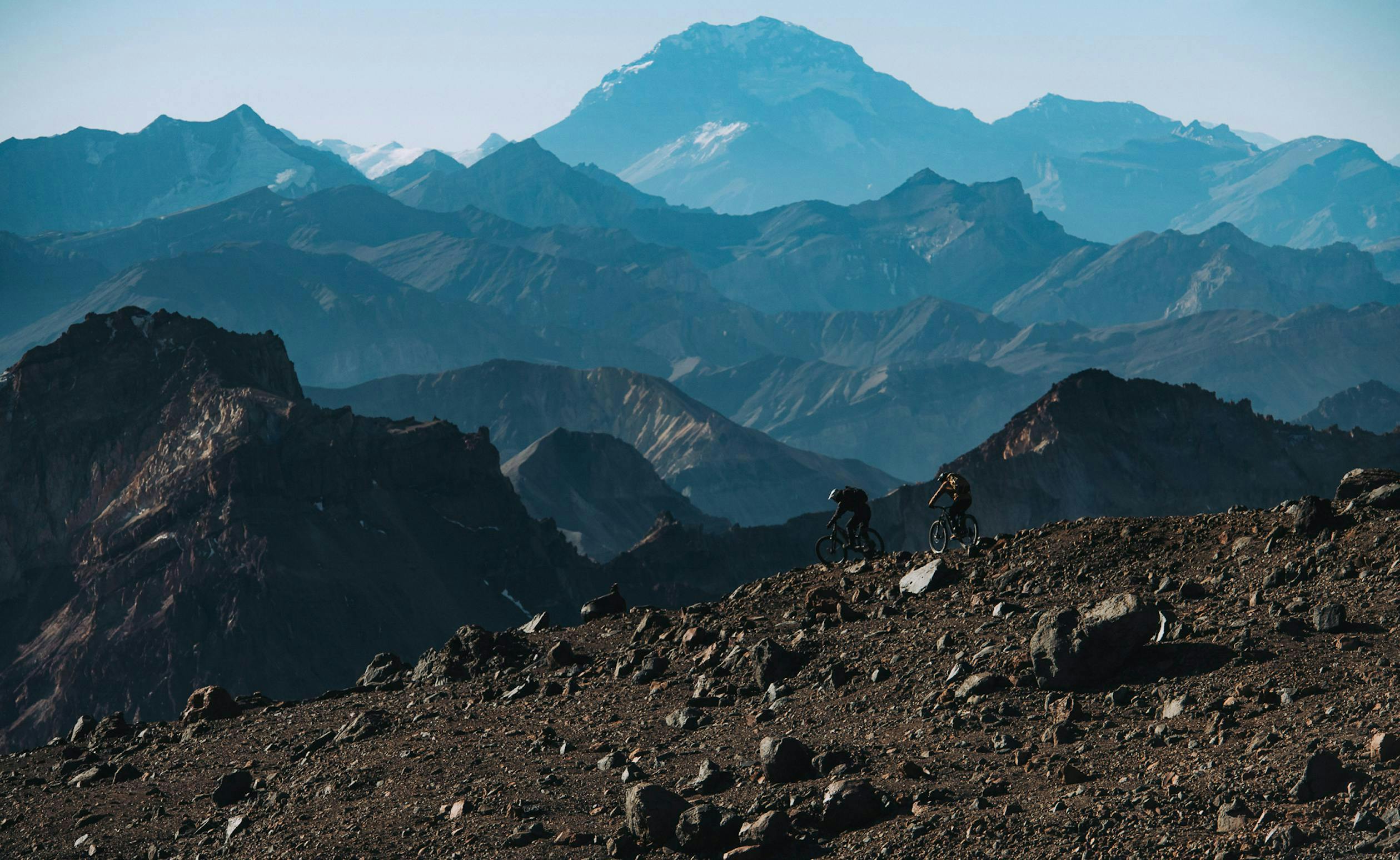
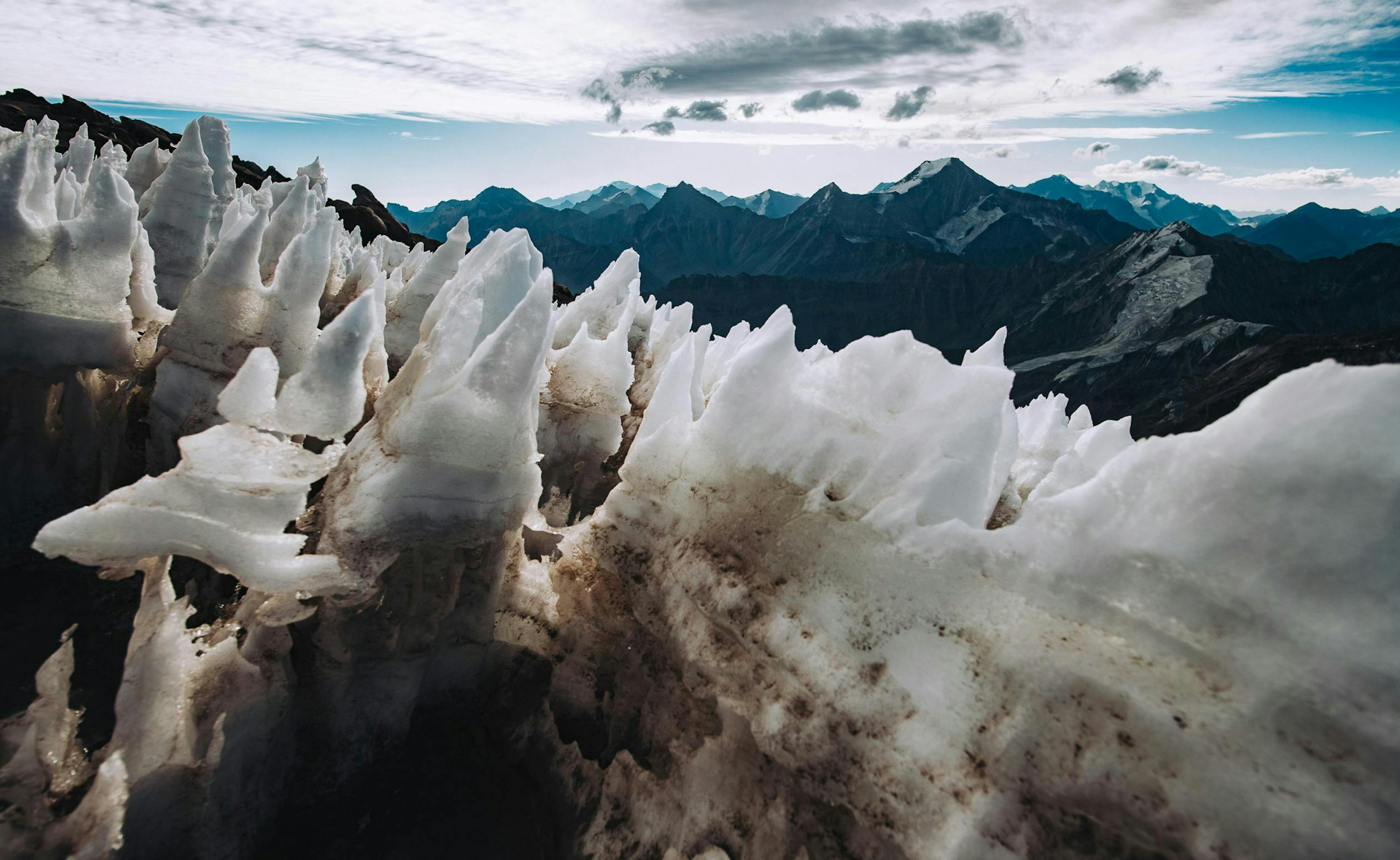
Awesome to hear. And any sneaky bikepacking things or luxury items you like to bring on these trips? Or interesting essentials?
I personally hate oatmeal, and my go-to snack on all my trip has always been canned sardines. I know the cans can be a bit cumbersome, but they pack such a nice protein punch, that I can’t live without them anymore. Also, the biggest issue on all these trips is being able to travel light, and I depend on the lightest ultra-light gear to keep the weights in check. From tents, sleeping bags, clothing, you name it.

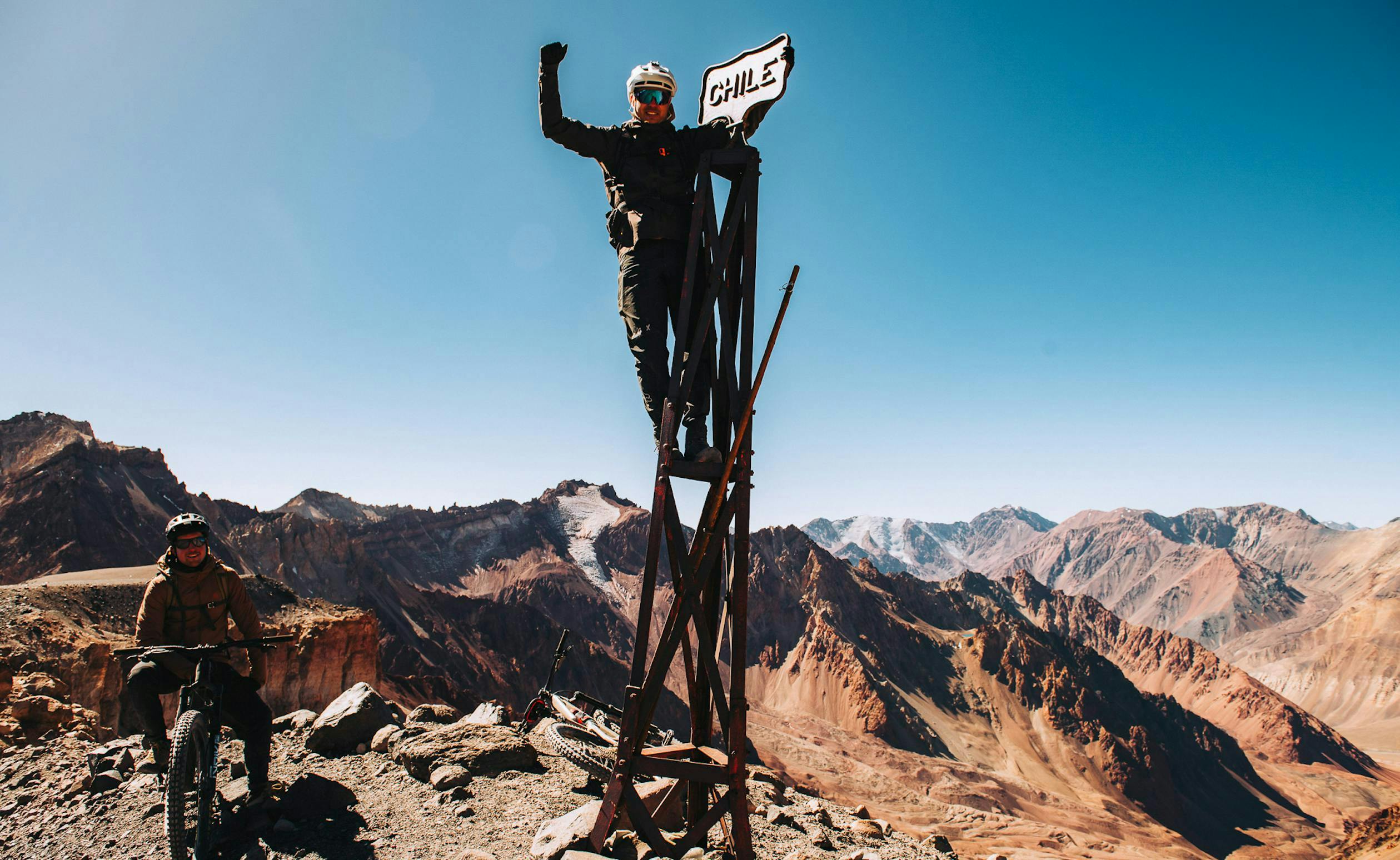
Interesting, we'll have to give those sardines a try sometime! Finally, are you scheming anything else up this year?
As a matter of fact we’re in the process of planning another adventure to Chile, but that’s I’ll keep that a secret until all the pieces fall into place.
Can't wait to see what's in store then! Thanks again for the time and best of luck getting that adventure under way.
